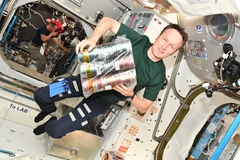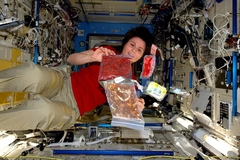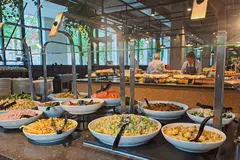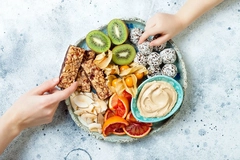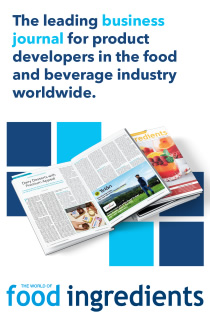Extending shelf life: Sustainability and convenience drive innovation amid evolving consumer demands

Recent product recalls, consumer demands for exotic food imports and products without e-numbers are driving shelf life extension innovations that preserve food quality. From natural antioxidants and antimicrobial blends to techniques like high-pressure processing, brands are adopting novel ways to stand out on the market shelf.
Sustainability, meanwhile, remains a key driver, as consumers prioritize reduced food waste and environmentally friendly packaging. The demand challenges manufacturers to develop solutions that extend shelf life while effectively using sustainable packaging.
Food Ingredients First speaks with Kerry, Kalsec, Corbion, IFF and Layn Natural Ingredients to discuss the latest shelf life innovations and how consumer demands are impacting the way manufacturers ensure food remains fresh and safe for extended durations.
A rise in product recalls across multiple categories and regions and the impact of inflation on consumer behavior are two of the main factors impacting the food preservation segment, observes Bert de Vegt, global VP, Food Protection & Preservation at Kerry.
“Contaminations from bacteria such as Listeria and Salmonella have endangered consumer health and received media coverage globally. The industry does not take shortcuts with food safety. Unfortunately, outbreak events are worst case scenarios for consumers, the industry and the category as a whole and their effects can be felt for years to come.”
Preservation and shelf life are interlinked and shelf life is a measure of value over time in consumers’ minds, says De Vegt.“Retailers and processors are adding their own food safety steps and guardrails, partnering with ingredient suppliers to build new failsafes to ensure outbreaks don’t occur. These solutions include the building of ingredient systems with multiple building blocks, to lock in the ratio at which food safety ingredients are added.”
On the consumer side, there is a shift toward consumer-centric ingredient usage over the last twenty years, says David Johnson, director of R&D Europe, at Kalsec.
“Previously, additives were used primarily to benefit manufacturers by ensuring product stability during production and distribution. Today, there’s more emphasis on delivering healthful, transparent ingredients that align with consumer values.”
“At the same time, there’s increasing pressure to avoid the use of e-numbers and maintain clean labels, presenting challenges for formulators who want to align with consumer expectations without compromising product stability or safety,” he adds.
Innova Market Insights data suggests that F&B launches using preservatives to extend shelf life saw a 5% growth from October 2019 to September 2024. Europe led the market, accounting for 42% of these launches, dominated by the bakery category (13%).
Evolving manufacturer and consumer perspectives
Kerry’s De Vegt believes that in the last ten years, the F&B industry has become more mindful and intentional about achieving a longer shelf life.
“We have seen some brands make a return to conventional preservation, recognizing the cost-conscious priorities of their target consumers.”
Brands that had gone to the other extreme of adding nothing on their label to achieve shelf life, leveraging processes and packaging-based preservation solutions, find these measures “unsustainable from cost, logistics or environmental resource point of view and are exploring ingredient-based alternatives,” he details.
 Shelf life extension has grown in importance as people seek fresher, longer-lasting and safer foods.Meanwhile, Mary Joe Fernandez, global VP of sales and business development at Layn Natural Ingredients, believes the importance of shelf life extension for both consumers and manufacturers has evolved significantly, influenced by consumer awareness, demand for convenience and e-commerce.
Shelf life extension has grown in importance as people seek fresher, longer-lasting and safer foods.Meanwhile, Mary Joe Fernandez, global VP of sales and business development at Layn Natural Ingredients, believes the importance of shelf life extension for both consumers and manufacturers has evolved significantly, influenced by consumer awareness, demand for convenience and e-commerce.
“Consumers have become more educated about food safety, quality and waste. Shelf life extension has grown in importance as people seek fresher, longer-lasting and safer foods. This demand has influenced manufacturers to explore more effective ways to preserve foods naturally while maintaining nutrition and taste.”
Meanwhile, as lifestyles have become busier, consumers increasingly demand convenient, ready-to-eat and minimally processed foods with longer shelf lives, which drives manufacturers to innovate preservation technologies “without compromising food quality.”
The growth of e-commerce and international food trade has also emphasized the need for products with extended shelf life to “endure longer shipping periods and storage conditions,” which is pushing innovation in preservation techniques to maintain product integrity over time, she states.
Eyeing sustainability goals
Up to 90% of the food industry’s carbon footprint can come from scope 3 emissions, which are upstream and downstream in their supply chain, depending on the company's supply chain stage, explains De Vegt.
“Food waste is responsible for downstream sustainability challenges. Additionally, to avoid food waste, a company may be engaging in more frequent deliveries, cooler temperatures, extra packaging, transport to facilities for additional processing etc., which means more trucks on the road and more direct practices that increase a company’s carbon footprint.”
 IFF’s Guardian range helps extend frying oil quality and reduce its waste by up to 40%, says Uroic.Kerry’s food waste estimator tool can help demonstrate the impact of extra shelf life days on waste statistics, specific to the product category and region, assuming all factors other than shelf life are equal, he adds.
IFF’s Guardian range helps extend frying oil quality and reduce its waste by up to 40%, says Uroic.Kerry’s food waste estimator tool can help demonstrate the impact of extra shelf life days on waste statistics, specific to the product category and region, assuming all factors other than shelf life are equal, he adds.
Additionally, IFF’s Frying Calculator can help manufacturers estimate potential savings in terms of reduced costs and avoided CO2 emissions related to "minimized frying oil waste for their specific processes," Ksenija Uroic, global product marketing lead for Food Protection at IFF, tells us. "Our Guardian range, designed to enhance the taste of fried foods and snacks, helps extend the quality of frying oil and reduce its waste by up to 40%.”
Meanwhile, consumers also increasingly associate extended shelf life with reduced waste and environmental responsibility, making it a “top priority” for brands to develop solutions that support these values, says Cristiane Marangoni, meat application manager EMEA at Corbion.
“A recent survey in Europe showed a rising awareness of sustainability among households, where people are actively seeking ways to make better use of their food. This alignment between consumer demands and producer priorities has fostered innovation in shelf life solutions that emphasize both quality and sustainability.”
“According to the Innova Trends Survey 2025, freshness ranks among the top three indicators of food quality, alongside price and packaging presentation, with 52% of consumers identifying it as a key criterion,” she adds.
Shifting away from synthetic additives
Various food producers are moving away from synthetic additives and preservatives in favor of “naturally derived alternatives,” as synthetic compounds face increasing scrutiny regarding health and safety, Fernandez continues.
As synthetic compounds face increasing scrutiny regarding health and safety, manufacturers are leaning toward naturally derived alternatives, says Fernandez.“Botanical extracts like rosemary, green tea and acerola are increasingly used due to their antioxidant and antimicrobial properties.”
The company has developed a polyphenolic natural preservative called SustanNx that “outperforms the commonly used synthetic preservatives BHA, BHT” in trials. “It is also better at sustaining shelf life than other natural preservatives such as rosemary, vitamin E and tocopherols.”
Johnson agrees that natural solutions are gaining traction, such as exploring methods to use natural antioxidants better or move minimally processed options to better appeal to label concerns.
“Our latest innovation, DuraShield, leverages natural antioxidants and antimicrobial blends tailored to specific applications to offer synergistic performance targeting oxidation and spoilage.”
The company has also developed advanced blends of rosemary extract and other natural antioxidants that provide “superior protection in snacks, oils, sauces, and dressings that can outperform synthetic options.”
Meanwhile, IFF has formulated Guardian Aquarox, which enhances the taste of beverages and “ensures their quality is maintained for extended periods,” says Uroic.
“It also plays a crucial role in protecting product quality during transitions to more sustainable packaging options.”
 Fresh meat and seafood pose shelf life extension challenges due to their perishable nature and high moisture content (Image credit: Corbion).Shelf life challenges
Fresh meat and seafood pose shelf life extension challenges due to their perishable nature and high moisture content (Image credit: Corbion).Shelf life challenges
Categories like snacks in sustainable packaging or clean label baked goods, present unique challenges in preservation, Johnson continues.
“These products often lack traditional preservatives, making them more susceptible to spoilage or oxidation. Applications that require both antioxidant and antimicrobial protection — such as nutrient-dense, plant-based products — also demand highly specialized solutions to maintain quality over time.”
For Fernandez, products made from plant-based proteins, such as meat alternatives, can be challenging due to their “unique formulations and high moisture content,” which make them prone to microbial spoilage.
“Foods that have high moisture content or which contain elevated levels of polyunsaturated fats are more prone to oxidation and microbial growth than dried foods or foods with higher levels of saturated fat,” she explains. These include nut butters, dressings and oils (high fat), fresh meat, and seafood due to their perishable nature, high moisture content, and vulnerability to bacterial growth.
Meanwhile, Corbion’s Marangoni finds ready-to-eat meals particularly challenging because they combine components with different preservation requirements.
“With high water activity (Aw >0.97) and a neutral pH, these products create an environment conducive to Listeria growth. Ensuring compliance with food safety regulations throughout their shelf life is critical, especially since even small lapses can pose significant health and reputational risks.”
 RTE meals have high water activity and a neutral pH, facilitating Listeria growth, says Marangoni.To overcome these hurdles, Corbion formulates natural preservation options like Verdad and our CLCM, which helps manufacturers “quickly test and compare solutions, saving time and money while maintaining the safety and appeal of their RTE products.”
RTE meals have high water activity and a neutral pH, facilitating Listeria growth, says Marangoni.To overcome these hurdles, Corbion formulates natural preservation options like Verdad and our CLCM, which helps manufacturers “quickly test and compare solutions, saving time and money while maintaining the safety and appeal of their RTE products.”
Business benefits
A short shelf life can impact F&B businesses by damaging their brand in the eyes of retailers, consumers and distribution partners, notes De Vegt. He therefore suggests using smart algorithms and data to predict shelf life, prove pathogen inhibition or both, to “make it easier for the industry to reformulate with food safety top of mind.”
For IFF’s Uroic, developing new products for export markets becomes more feasible with extended shelf life.
“Businesses can meet international demand and expand their global presence by offering products that maintain their quality over longer periods. This opens up new revenue streams and enhances the company’s competitive edge.”
“For example, a bakery using Microgard 930 fermented ingredients was able to improve the taste and sensory quality of their products, extending their shelf life and enabling them to export to the US and UK markets,” he adds.
However, businesses can also use a “multiple hurdles” concept to enhance shelf life preservation, explains IFF’s Uroic.
 In future, Johnson expects advancements in processing technologies that yield unique, natural preservative ingredients. “This concept involves understanding that food preservation methods, in addition to antimicrobials, include treatments such as heating, drying, acidifying, high-pressure pasteurization and irradiation.”
In future, Johnson expects advancements in processing technologies that yield unique, natural preservative ingredients. “This concept involves understanding that food preservation methods, in addition to antimicrobials, include treatments such as heating, drying, acidifying, high-pressure pasteurization and irradiation.”
Predicting future advancements
In the future, Johnson anticipates significant advancements in processing technologies that yield unique, natural preservative ingredients.
“The emergence of precision fermentation is another exciting development, offering scalable solutions that align with clean label and sustainability goals. Widespread adoption, though, will require regulatory landscapes to evolve to support these innovative approaches better and the positive impacts they can unlock.”
Meanwhile, for Fernandez, enhanced functional packaging, AI and predictive analytics will lead the way in future shelf life innovations.
